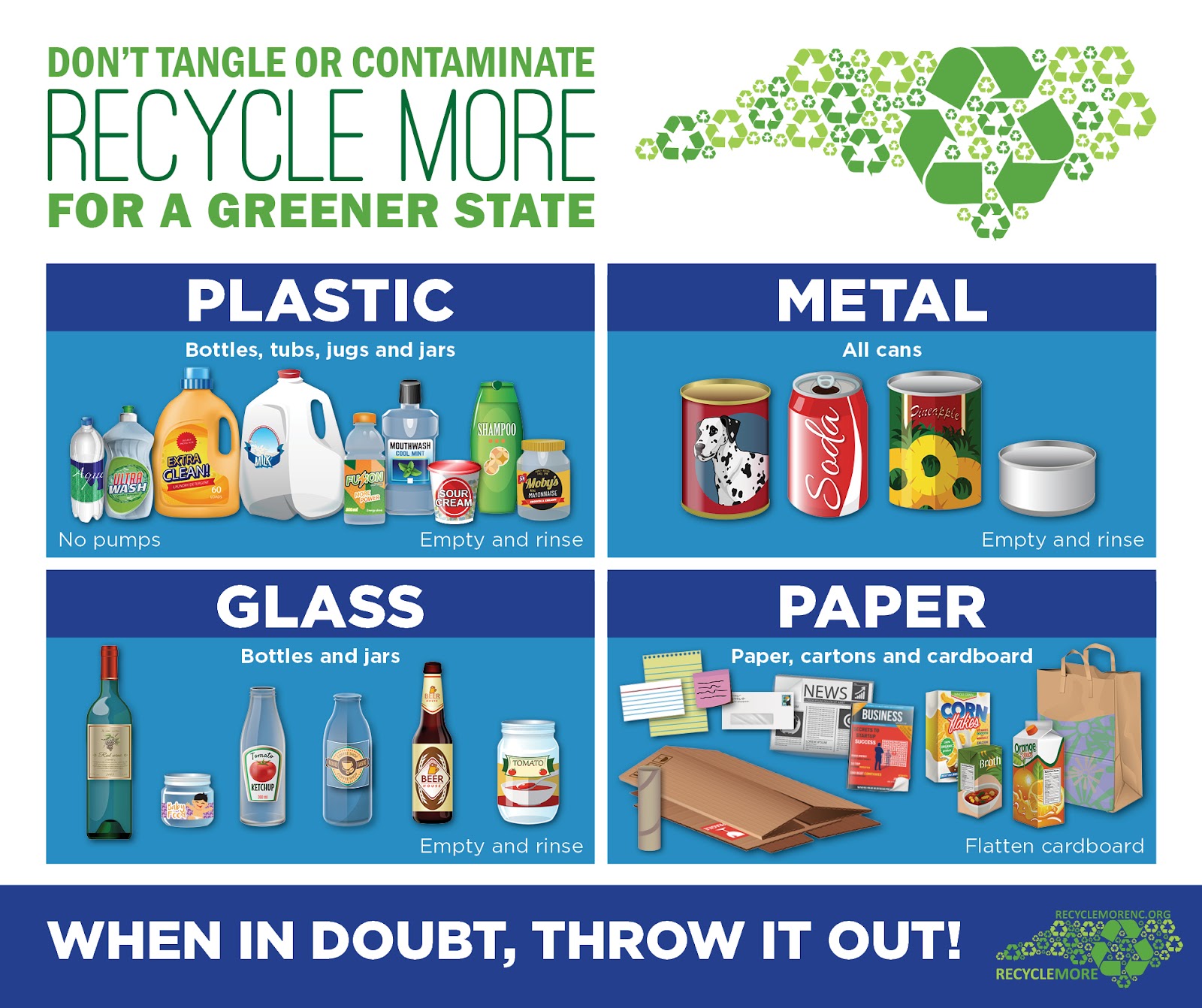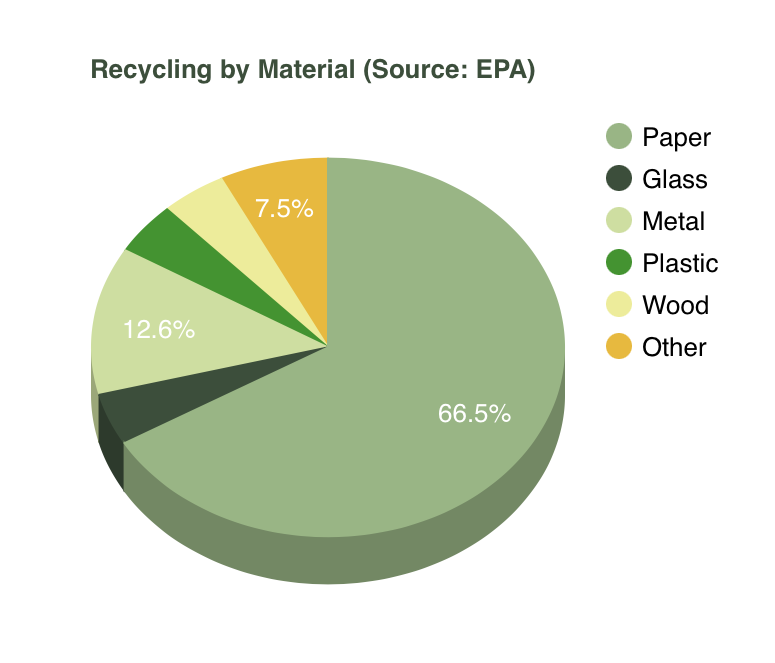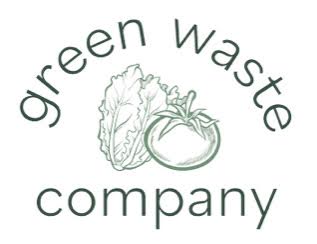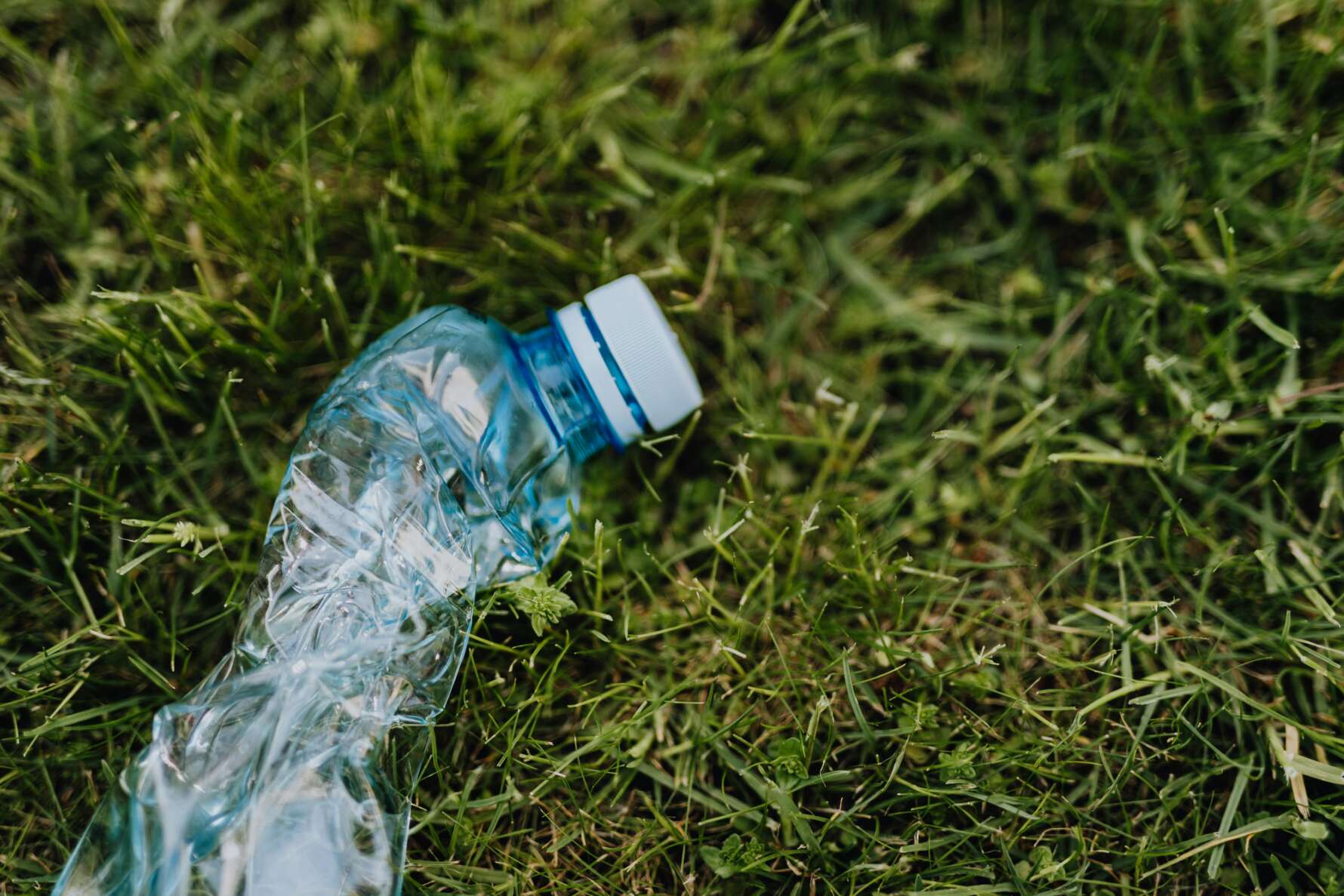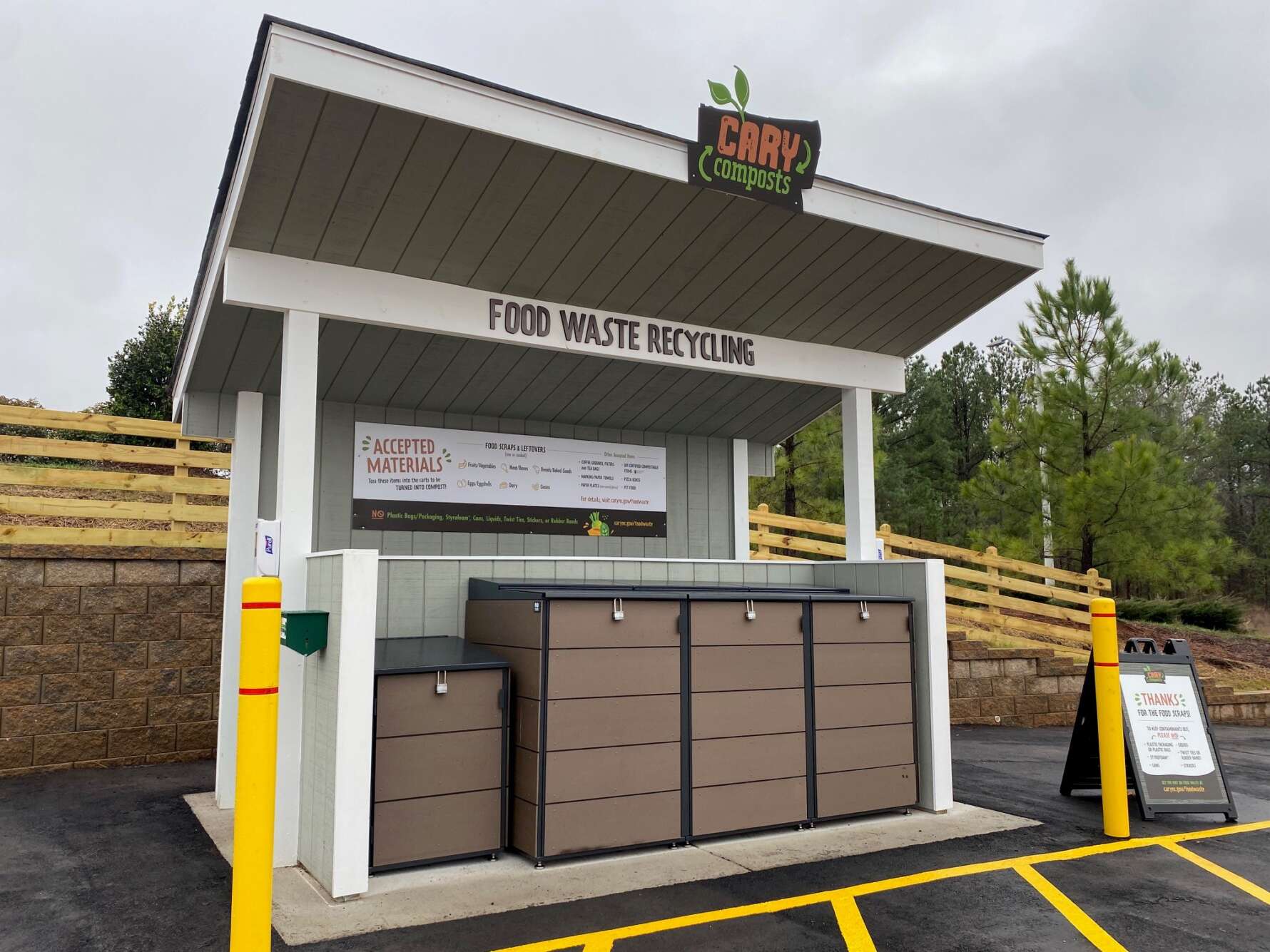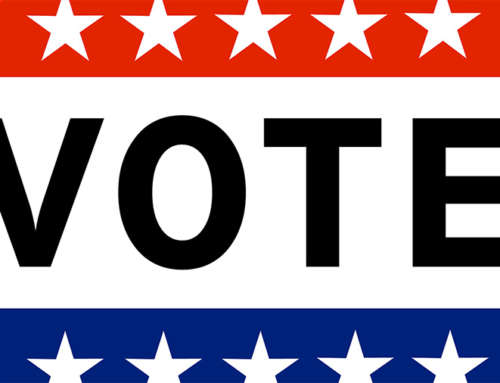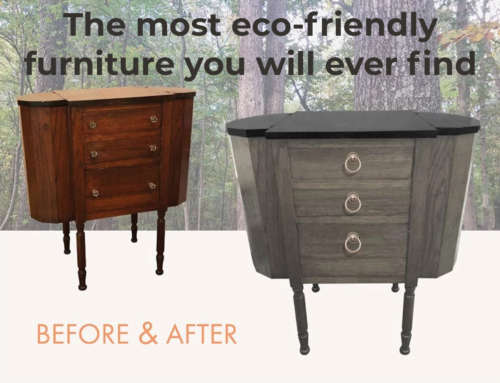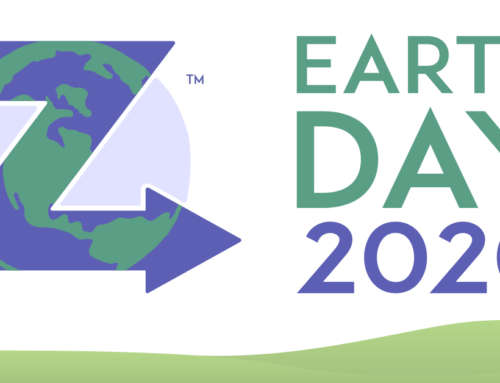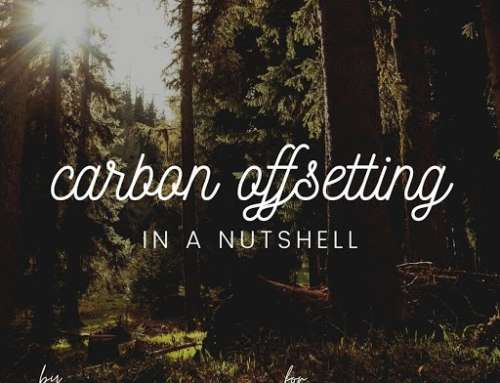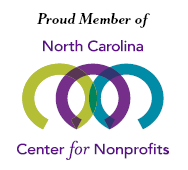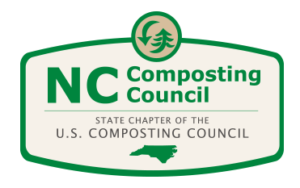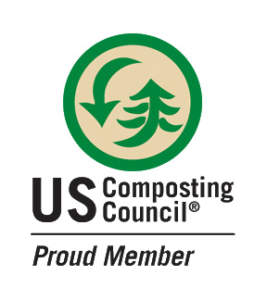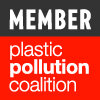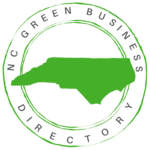Am I Recycling Correctly?
Am I Recycling Correctly?
Written By
A few common misconceptions and pointers about the practice of recycling
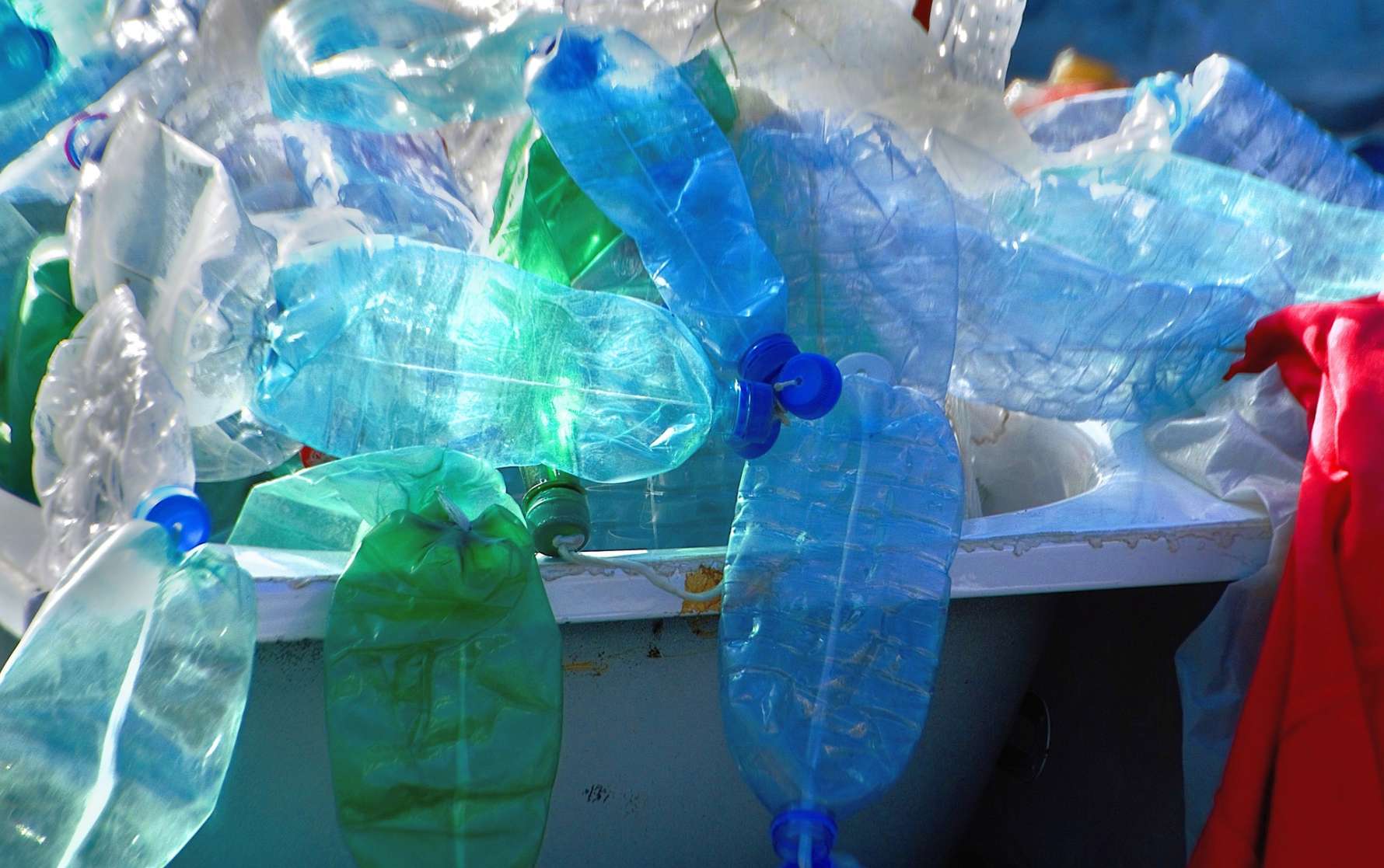
A few months ago, I opened my pantry door and threw a plastic container in my family’s recycling container. As I turned around and shut the door, I noticed an inquisitive look on my sister’s face.
“Can you really recycle that Reese?”
The question was simple, and as a self-proclaimed environmentalist and sustainability studies minor at UNC- Chapel Hill, it was one I felt I should have known the answer to. But the truth was, I didn’t. I told her that every time I go to put something in the recycling bin, I’m really just wishcycling. Despite being one of the most popular environmental practices, recycling is a convoluted industry. It is hard for even environmentalists to be certain what can be recycled and what really is being recycled. In an effort to help, I’ve given a few tips to follow when it comes to recycling in your curbside bin.
Don’t Fall for the Recycling Symbol
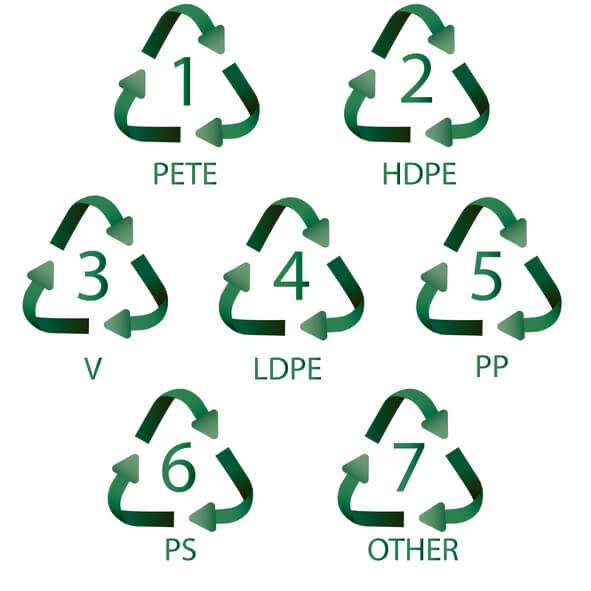

The Question is Will it? Not Can it?- Depends on market/demand
Another important factor when it comes to recycling, and of the least recognized, is the demand of the recycled product. In order to make recycling a profitable practice, there needs to be a market demand for the products created; someone needs to be willing to buy whatever is made using recycled materials. If there is no one buying these recycled products, not only is there a monetary loss, but the energy used during the recycling process is also wasted. Because of this reality, the question you need to ask yourself is not can a product be recycled, but will it be recycled. There are plenty of products sent to recycling plants that could be recycled, but are still thrown away because there is no market for the recycled materials. An example of a great product to recycle is aluminum cans, not only do they remain mostly uncontaminated, but recycled aluminum is actually cheaper to produce than newly minted aluminum, creating an outstanding market for the recycled product. Here is a chart of materials that are most commonly recycled:
Know Where You Are
Finally, and probably the best tip when it comes to recycling, is to know your local municipalities recycling rules. Recycling is not a univeralized industry. Different districts will accept different products to be recycled depending on what the materials recovery facility (MRF) can accept and the contract with the local municipality. This is why it is difficult to give advice when it comes to recycling and why you are likely to stare at an item wondering, more likely wishing, that it will be recycled. What may be true for one area will be different for another. The best way to make sure you are recycling effectively is to know your own district’s guidelines. For North Carolina, I’ve added a link that makes it easy to find your municipality’s recycling rules:
There are only nine items collected curbside that are reliably recycled- plastic bottles, tubs, jugs, and jars; metal cans; glass bottles and jars; paper and cardboard.
A Flawed Process
The process of recycling is not as straightforward as it was intended to be. The reason this is so important is because wishcycling is harmful to the recycling industry because it leads to contamination of the materials. Attempting to recycle products that won’t be recycled puts a lot of stress on the system, reduces the economic viability of the recycling industry, and often leads to a higher carbon footprint as it travels to the MRF and then to landfill. Because of the increase in wishcycling as people desire to recycle more and more, we’ve seen many municipalities roll back their recycling infrastructure.
Ultimately, recycling plays a small role in a sustainable lifestyle. Solutions are right in front of us, even in the recycling symbol itself. The recycling symbol has three arrows which each stand for a different sustainable practice. One of them is of course recycling but the other two are reduce and reuse. These two practices are both actually more effective than recycling because reducing your use of products reduces the need to create so many goods in the first place. This in turn reduces the consumption of resources used in the creation of these products. When we reuse the products, it once again reduces the demand for the production of those goods. While recycling reuses materials, the process still requires energy to complete; energy that would not be needed if the products were reused or not needed in the first place (reduced).
Recycling is a confusing practice and it can be hard to know what is okay to throw in the collection bin. It important to remember that even though it comes from a good place, it is harmful to wishcycle. If you aren’t sure about a product, do more research before you try to recycle it. If you still can’t find a clear answer, it’s better just to air on the side of caution and throw it out. Most importantly, focus more on reducing and reusing in order to reduce your need to recycle in the first place.
